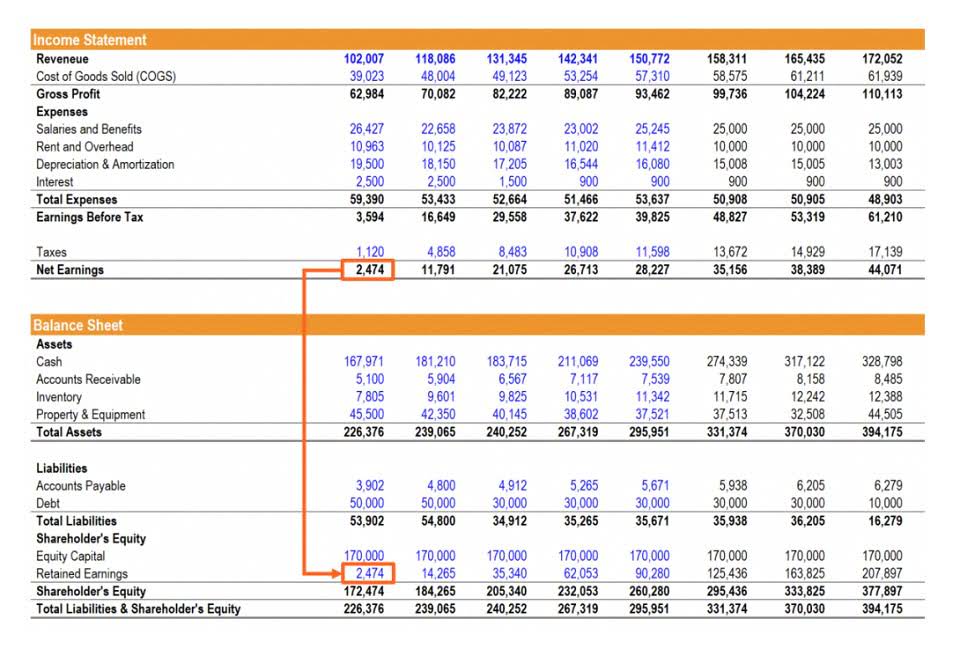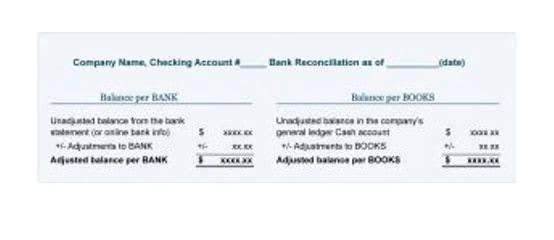
Retaining earnings by a company increases the company’s shareholder equity, which increases the value of each shareholder’s shareholding. This increases the share price, which may result in a capital gains tax liability when the shares are disposed of. The statement also delineates changes in net income over a given period, which may be as often as every three months, but not less than annually. Since the statement of retained earnings is such a short statement, it sometimes appears at the bottom of the income statement after net income.
Tune into Financial News

One can get a sense of how the retained earnings have been used by studying the corporation’s balance sheet and its statement of cash flows. The retained earnings for a capital-intensive industry or a company in a growth period will generally be higher than those of some less-intensive or stable companies. This is due to the larger amount being redirected toward asset development. For example, a technology-based business may have higher asset development needs than a simple T-shirt manufacturer, due to the differences in the emphasis on new product development.
- The appropriation may be established as part of a statutory requirement, primarily related to acquisitions of treasury stock.
- Even though some refer to retained earnings appropriations as retained earnings reserves, using the term reserves is discouraged.
- On a company’s balance sheet, retained earnings are put under the equity section.
- Normal, recurring corrections and adjustments, which follow inevitably from the use of estimates in accounting practice, are not treated as prior period adjustments.
- ABC Corporation retained earnings at the beginning of 2019 of $350,000.
What are the Benefits of Factoring Your Account Receivable?
All business types (sole proprietorships, partnerships, and corporations) use owner’s equity, but only sole proprietorships name the balance sheet account “owner’s equity.” The formula to calculate retained earnings encompasses those elements. Due to https://www.bookstime.com/ its definition, some people may confuse retained earnings for current liabilities or assets.
Revenue vs. net profit vs. retained earnings
Over the same duration, its stock price rose by $84 ($112 – $28) per share. A maturing company may not have many options or high-return projects for which to use the surplus cash, and it may prefer handing out dividends. The entity might choose not to distribute the retained earnings to the shareholders if they need funds to expand its operation. Retained earnings and equity both are not recording in the income statement, but they are presented in the statement of change in equity. However, U.S. GAAP is not the only full accrual method available to non-public corporations.

This statement reconciles https://www.instagram.com/bookstime_inc the beginning and ending retained earnings for the period, using information such as net income from the other financial statements. Retained earnings are the portion of income that a business keeps for internal operations rather than paying out to shareholders as dividends. Retained earnings are directly impacted by the same items that impact net income. These include revenues, cost of goods sold, operating expenses, and depreciation. Now your business is taking off and you’re starting to make a healthy profit which means it’s time to pay dividends.
What is the approximate value of your cash savings and other investments?
Alternatively, the company paying large dividends that exceed the other figures can also lead to the retained earnings going negative. Retained earnings are reported in the shareholders’ equity section of the corporation’s balance sheet. Corporations with net accumulated losses may refer to negative shareholders’ equity as positive shareholders’ deficit. A report of the movements in retained earnings is presented along with other comprehensive income and changes in share capital in the statement of changes in equity. Retained earnings enable you to track how much money you have accumulated in an income statement using a formula.

Use an income statement to figure out your profit

A fourth reason for appropriating RE arises when management wishes to disclose voluntary dividend restrictions that have been created to assist the accomplishment of specific organizational goals. While the intent of the appropriation requirement is to maintain the debtor’s solvency, it does not work nearly as well as the more specific restrictions. The appropriation may be established as part of a statutory requirement, primarily related to acquisitions of treasury stock. For various reasons, some firms appropriate part is retained earnings a liability or equity of their retained earnings (RE). Retained earnings and profits are related concepts, but they’re not exactly the same.
How confident are you in your long term financial plan?
A company’s shareholder equity is calculated by subtracting total liabilities from its total assets. Shareholder equity represents the amount left over for shareholders if a company pays off all of its liabilities. To see how retained earnings impact shareholders’ equity, let’s look at an example. Retained earnings are reported under the shareholder equity section of the balance sheet while the statement of retained earnings outlines the changes in RE during the period. Once your cost of goods sold, expenses, and any liabilities are covered, you have to pay out cash dividends to shareholders. The money that’s left after you’ve paid your shareholders is held onto (or “retained”) by the business.
Get in Touch With a Financial Advisor
It can go by other names, such as earned surplus, but whatever you call it, understanding retained earnings is crucial to running a successful business. Before discussing where retained earnings fall on the balance sheet, it is crucial to understand what they are. It is easier to understand what retained earnings are after defining them. However, if an LLC doesn’t distribute all of its earning to its shareholders, it could be liable for supplemental corporation tax on any amount retained over $250,000. High-debt companies may retain more earnings to reduce debt and improve financial health. For instance, tech startups often reinvest heavily to fuel growth, whereas mature utility companies might pay more dividends.
